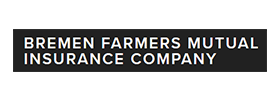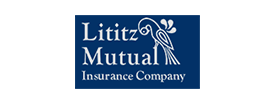Motor vehicle thefts increased 25% from 2019 to 2022 alone. Auto theft is an issue that causes significant financial losses, property loss, damages, and even injury or fatalities due to the involvement of stolen vehicles in crime. Auto theft rates could also be contributing to a rise in your car insurance rates!
Theft is obviously a huge issue in the U.S., and in some parts more than others. Here’s how you can protect your own car from auto theft and prevent yourself from contributing to the statistic.
Is auto theft contributing to car insurance price increases?
Yes. Auto theft is a significant contributor to the rising car insurance rates in the United States. When vehicles are stolen, insurance companies often have to cover the cost of the stolen vehicle, leading to substantial financial losses and claim payout for companies. These losses don’t just impact the insurance companies; they also affect policyholders. To offset the increased costs associated with auto theft claims, insurers may raise premiums across the board. So, just because your car hasn’t been stolen, you could still see rate increases because other policyholders are filing claims for theft.
Additionally, the rise in organized crime rings targeting high-value vehicles has exacerbated the problem. These groups often dismantle stolen cars to sell the parts on the black market, making it difficult for authorities to recover the vehicles. This trend has led to an increase in claims, further driving up costs.
What’s worse is the costs associated with these thefts are much higher due to the expensive parts and sophisticated systems being implemented in newer vehicles. Insurance rates rise to cover the growing risks and expenses, making auto theft a key factor in the overall increase in car insurance premiums.
Preventing auto theft
No car is immune to theft. There’s really no surefire way to protect a vehicle, but there are measures you can take to lessen the possibility of theft. What’s even better is that your insurance company may reward you for the steps you take to prevent theft. Some aftermarket devices built to deter theft, like car alarms and wheel locks, qualify for insurance discounts with certain insurance companies.
Our advice for preventing auto theft
Not all of our steps will guarantee an insurance discount, but what they will guarantee are slightly reduced odds of auto theft. Consider the following if you’re concerned about theft or simply want to bolster your defense against an ongoing issue:
Secure your vehicle
Always lock your car and ensure that windows are fully closed before leaving the vehicle, even if you’re just stepping away for a short time. Parking in well-lit, busy areas can also deter potential thieves. If possible, park in a garage or secured lot.
Use anti-theft devices
Consider installing anti-theft devices such as steering wheel locks, car alarms, or immobilizers. These devices can make it more difficult for thieves to steal your vehicle, acting as both a deterrent and a safeguard.
Invest in a GPS tracking system
A GPS tracking system can help authorities locate your vehicle quickly if it’s stolen. These systems can be especially useful for recovery and can sometimes qualify you for discounts on your insurance premium.
Keep valuables out of sight
Leaving valuables in plain view can attract thieves. Store items like electronics, bags, and other valuables out of sight, either in the trunk or by removing them from the car altogether.
Stay vigilant in high-risk/crime areas
Be aware of your surroundings, especially in areas known for high rates of auto theft. Avoid leaving your vehicle unattended for extended periods in these locations, and consider additional security measures if you live or work in a high-risk area.
Update your vehicle’s security technology
If you drive an older vehicle, consider upgrading its security features. Modern cars often come with advanced anti-theft technology, but older models can benefit from added security measures like aftermarket alarms or immobilizer.
Certain vehicles may be more at-risk than others
Certain vehicles, particularly those that are higher value or are sometimes simply more common, may be considered “higher risk” for auto theft and as such can cost more to insure. As to what vehicles are considered high-risk, well it depends. Every insurance company has their own list, and they’re not exactly publicly available. You can determine which car model/make is the lowest to insure by shopping around and getting a variety of quotes (or you can ask an agent to do this on your behalf), but sometimes the National Insurance Crime Bureau will share a list of most stolen vehicles that can be handy. Not all insurers will rate cars based on this list exactly, but there is usually plenty of overlap.
The same goes for certain states and regions, too. California currently holds the crown as the state with the most auto thefts per year, with around 99,000 thefts recorded in 2023. Texas comes in second with around 55,000 recorded instances of theft. Living in these states may mean paying more for your car insurance than you would if you lived in a state with a lower recorded rate of vehicle theft.
































